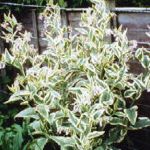| Common Name: |
Russian Comfrey |
| Botanical Name: |
Symphytum x uplandicum syn. S. peregrinum |
| Genus: |
Symphytum |
| Family: |
Boraginacea |
| Native Location: |
Europe and W Asia |
| Cultivation: |
Moist to wet soil in sun or partial shade. Comfrey is invasive and deep-rooted, and difficult to erradicate when established. Plants may be affected by rust. |
| Propagation: |
By seed sown in autumn or spring (species only); by division in spring or autumn. |
| Harvest: |
Leaves are picked in early summer before flowering and dried for infusions, liquid extracts, and poultices. Roots are lifted during dormancy and dried for decoctions, liquid extracts, and ointments. |
| Height: |
2m (6ft) |
| Width: |
60cm (24in) |
| Hardiness: |
Z4-9 |
| Variations: |
Bocking 4
Has violet flowers and non-bitter taste. |
Variegatum
Has irregular, ivory variegation. Tends to scorch in full sun.
Height: 1m (3ft)
Width: 60cm (24in) |
|
| Parts Used: |
Leaves, roots |
| Properties: |
A sweet, mucilaginous, cooling herb with expectorant, astringent, soothing, and healing effects. It reduces inflammation, and controls bleeding. |
| Medicinal Uses: |
Internally for gastric and duodenal ulcers, chronic bronchial diseases, colitis, irritable bowel syndrome, and rheumatism (leaves). Externally for psoriasis, eczema, sores, varicose veins and ulcers, arthritis, sprains, bunions, hemorrhoids, sore breasts during lactation, and injuries, including fractures. |
| Warning: |
Bristly foliage is a skin irritant.
This herb, especially in the form of tablets and capsules of the roots or leaves, is subject to legal restrictions in some countries. |
| Culinary Uses: |
'Bocking 4' is popular for liquefying as an ingredient of tonic drinks. |
| Economic Uses: |
Russian comfrey is preferred to S. officinale for livestock fodder. |
| Bibliography: |
Encyclopedia of herbs by Deni Brown Copyright © 1995, 2001 Dorling Kindersley Limited. pg 377 |
